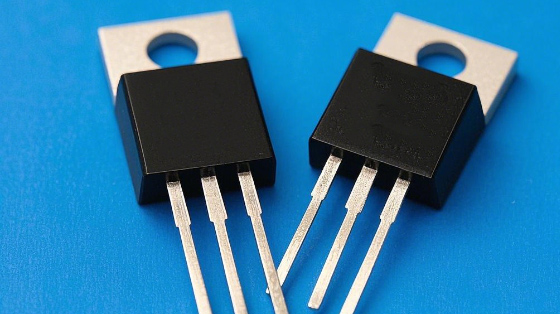Electronic Signal Enhancement and Rhythm Controller
In the complex symphony of electronic technology, amplifiers and clock circuits play the key roles of "loudspeakers" for signal enhancement and "conductors" for rhythm control, respectively. They cooperate with each other to endow many electronic devices with clear and powerful signal processing capabilities and accurate and stable timing control. From daily digital products such as smartphones and computers to professional fields such as medical equipment and communication base stations, their silent dedication is inseparable, which effectively promotes the continuous progress and innovation of electronic technology, and deeply shapes the digital life and work mode of modern society.
Amplifiers, as an electronic device that can enhance the amplitude of electrical signals, its core mission is to amplify and process weak input signals, so that they are sufficient to drive subsequent circuits or loads, so as to achieve various complex functions. Amplifiers are rich and diverse, and can be divided into audio amplifiers, RF amplifiers, operational amplifiers, and other categories according to different application scenarios and technical requirements, each of which plays a unique and indispensable role in a specific field.

RF amplifiers play a crucial role in the field of wireless communication. In modern communication technology, whether it is mobile phones, base stations or satellite communication systems, RF amplifiers are required to amplify high-frequency RF signals to achieve long-distance signal transmission and effective coverage. The operating frequency of RF amplifiers is usually in the microwave band or even higher, which places extremely strict requirements on their performance. It not only needs to have high gain to compensate for signal attenuation during transmission, but also needs to have good linearity to ensure accurate amplification of modulated signals and avoid signal distortion and affect communication quality. In addition, RF amplifiers also need to consider factors such as impedance matching and stability. For example, in 5G communication base stations, the application of massive MIMO (multiple input multiple output) technology makes the base station need a large number of radio frequency amplifiers to drive the antenna array. These radio frequency amplifiers can amplify the radio frequency signal modulated by the baseband signal with high power, and then radiate it to the surrounding space through the antenna to achieve high-speed\ large-capacity signal transmission. At the same time, in mobile end points such as mobile phones, the radio frequency amplifier is also responsible for amplifying and filtering the received weak radio frequency signal, so that the subsequent demodulation and decoding circuit can accurately restore the original information and ensure our smooth communication in the mobile environment.
Operational amplifiers, as a highly versatile amplifier, can be called a "universal tool" in analog circuit design. It has the characteristics of extremely high input impedance, extremely low output impedance and high open-loop gain, and can be widely used in signal amplification, filtering, comparison, operation and other circuit functions. In terms of signal amplification, operational amplifiers can achieve accurate voltage amplification through the configuration of external resistor networks, which are often used in sensor signal conditioning circuits to amplify weak sensor output signals to meet the requirements of subsequent data collection or processing circuits. For example, in a temperature sensor circuit, an operational amplifier can amplify the tiny voltage changes generated by the sensor, allowing it to be accurately read and processed by a microcontroller or ADC (analog-to-digital converter). In a filter circuit, an operational amplifier is combined with capacitors, resistors, and other components to build various types of active filters, such as low-pass filters, high-pass filters, and band-pass filters, to achieve screening and processing of specific frequency signals, effectively removing noise and interference components in the signal. In terms of signal comparison and operation, an operational amplifier can be used as a voltage comparator to determine the magnitude of the two input voltages, thereby generating a digital logic level signal, which is widely used in control systems, signal detection, and other fields. At the same time, it can also realize mathematical operations such as addition, subtraction, multiplication, and division, providing powerful computing power for analog signal processing. For example, in an audio mixing circuit, an operational amplifier can add and mix multiple audio signals in a certain proportion to create a rich variety of sound effects.
The clock circuit, like the "pacemaker" of an electronic system, provides a stable and accurate clock signal for the entire system, ensuring that each circuit module can work in accordance with a unified timing. The clock signal plays a crucial role in digital circuits, determining the data transmission rate, processing speed, and synchronization of various operations. It is the basic guarantee for realizing complex digital logic functions.
Crystal oscillators are one of the most commonly used clock sources in clock circuits, and they have become the first choice for many applications that require clock accuracy due to their extremely high frequency stability and accuracy. Crystal oscillators utilize the piezoelectric effect of quartz crystals. When a voltage is applied across the crystal, the crystal generates mechanical vibrations, which in turn generate an alternating electric field, resulting in a stable oscillation signal. Its oscillation frequency is usually determined by the natural frequency of the quartz crystal, and it has extremely low frequency drift characteristics, capable of maintaining a high degree of stability under conditions such as different ambient temperatures and voltage fluctuations. For example, on the main board of the computer, the crystal oscillator provides reference clock signals for various key components such as CPU\ chipset\ memory to ensure that they can accurately synchronize operations during high-speed operation. The CPU executes instructions according to the beat of the clock signal, and the memory reads and writes data according to the rhythm of the clock signal. Once the clock signal is deviated or unstable, it will lead to serious consequences such as system operation errors, data transmission errors and even system crashes. In communication equipment, such as base stations\ routers, etc., the crystal oscillator also provides high-precision clock reference for signal processing\ data transmission and other functional modules to ensure the reliable operation of the communication system and the accurate transmission of data.
In addition to the crystal oscillator, the clock circuit may also include components such as the clock distribution chip\ phase-locked loop (PLL), which is used to distribute the clock signal\ frequency doubling\ frequency division and other processing to meet the diverse needs of different modules in the system for clock frequency and phase. The clock distribution chip can distribute a clock source signal to multiple different circuit branches, ensuring that each branch can obtain a stable and synchronized clock signal. For example, in a large server system, a high-performance clock distribution chip can evenly distribute the master clock signal to each CPU core\ memory module\ I/O interface and other components, so as to achieve efficient coordination of the entire system. The phase-locked loop is a circuit technology that can synthesize and phase adjust the input clock signal. It can multiply or divide the input clock signal to obtain the required output clock frequency according to the needs of the system, and at the same time, it can precisely control the phase of the output clock. In some applications that require flexible adjustment of clock frequency, such as software radio systems\ digital television receivers, the phase-locked loop plays an important role. By dynamically adjusting the parameters of the phase-locked loop, the reception and processing of signals in different frequency bands can be realized, improving the adaptability and flexibility of the system.
With the rapid development of electronic technology, amplifiers and clock circuits are also constantly evolving and innovating. In the field of amplifiers, the application of new materials and technologies has brought new opportunities for their performance improvement. For example, amplifiers based on wide-bandgap semiconductor materials such as silicon carbide (SiC) and gallium nitride (GaN) are gradually emerging. These materials have higher electron saturation drift speed, breakdown electric field strength and thermal conductivity. Compared with traditional silicon-based material amplifiers, they can operate at higher frequencies, higher power, and have lower losses and better heat dissipation performance. In high-frequency and high-power application scenarios such as 5G communication, radar, and satellite communication, wide-bandgap semiconductor amplifiers have shown great advantages, which can effectively improve the transmission distance, coverage, and communication quality of signals. At the same time, the degree of integration of amplifiers is also increasing, and more and more functional modules are integrated into a single chip, such as the integration of audio amplifiers and audio processing circuits\ RF amplifiers and transceiver front-end circuits, etc. This not only reduces the size and power consumption of the circuit, but also improves the reliability and stability of the system.
In terms of clock circuits, with the continuous advancement of chip manufacturing processes, the accuracy and stability of clock circuits have been further improved. For example, using more advanced lithography technology and semiconductor processes, crystal oscillators with higher frequency stability can be manufactured, with a smaller frequency drift range, which can meet the emerging applications that require extremely high clock accuracy, such as quantum computing\ high-precision measuring instruments. In addition, the low-power design of clock circuits has also become one of the key areas of research. In applications that require extremely high power consumption, such as mobile devices\ Internet of Things devices, the development of low-power clock circuit technology is crucial to extending the battery life of the device. For example, dynamic frequency adjustment technology is used to dynamically change the clock frequency according to the load of the system, reduce the clock frequency when the system is idle to reduce power consumption, and increase the clock frequency when the system requires high-performance operation, so as to ensure system performance. Optimize power consumption under the premise.
In summary, amplifiers and clock circuits, as the enhancement and rhythm controller of electronic signals, play an irreplaceable key role in all fields of electronic technology. Their continuous innovation and development not only provide a strong driving force for the upgrading of traditional electronic equipment, but also lay a solid foundation for the breakthrough and rise of emerging technologies, leading us to a new era of more intelligent, efficient and accurate electronic technology.





